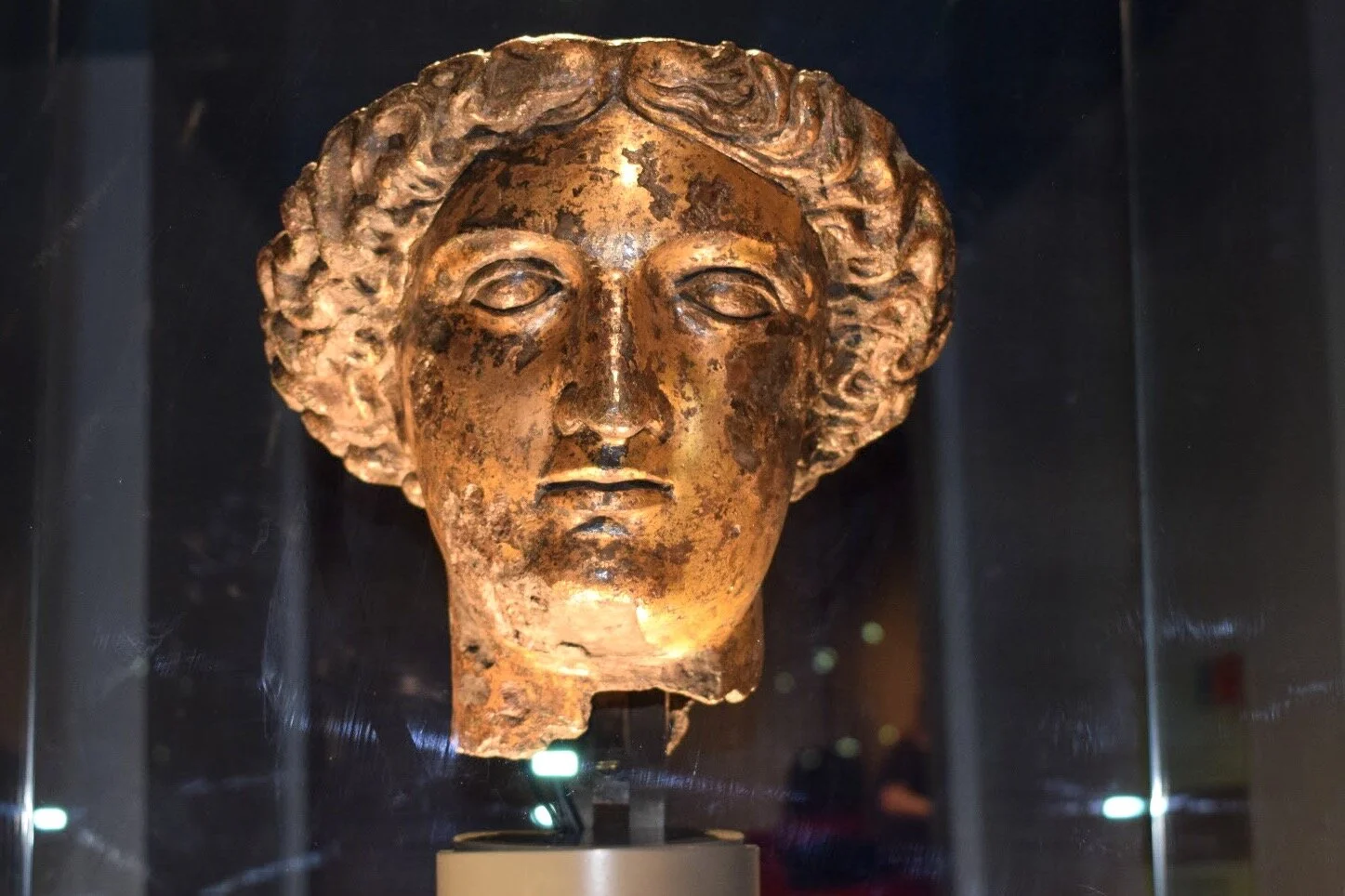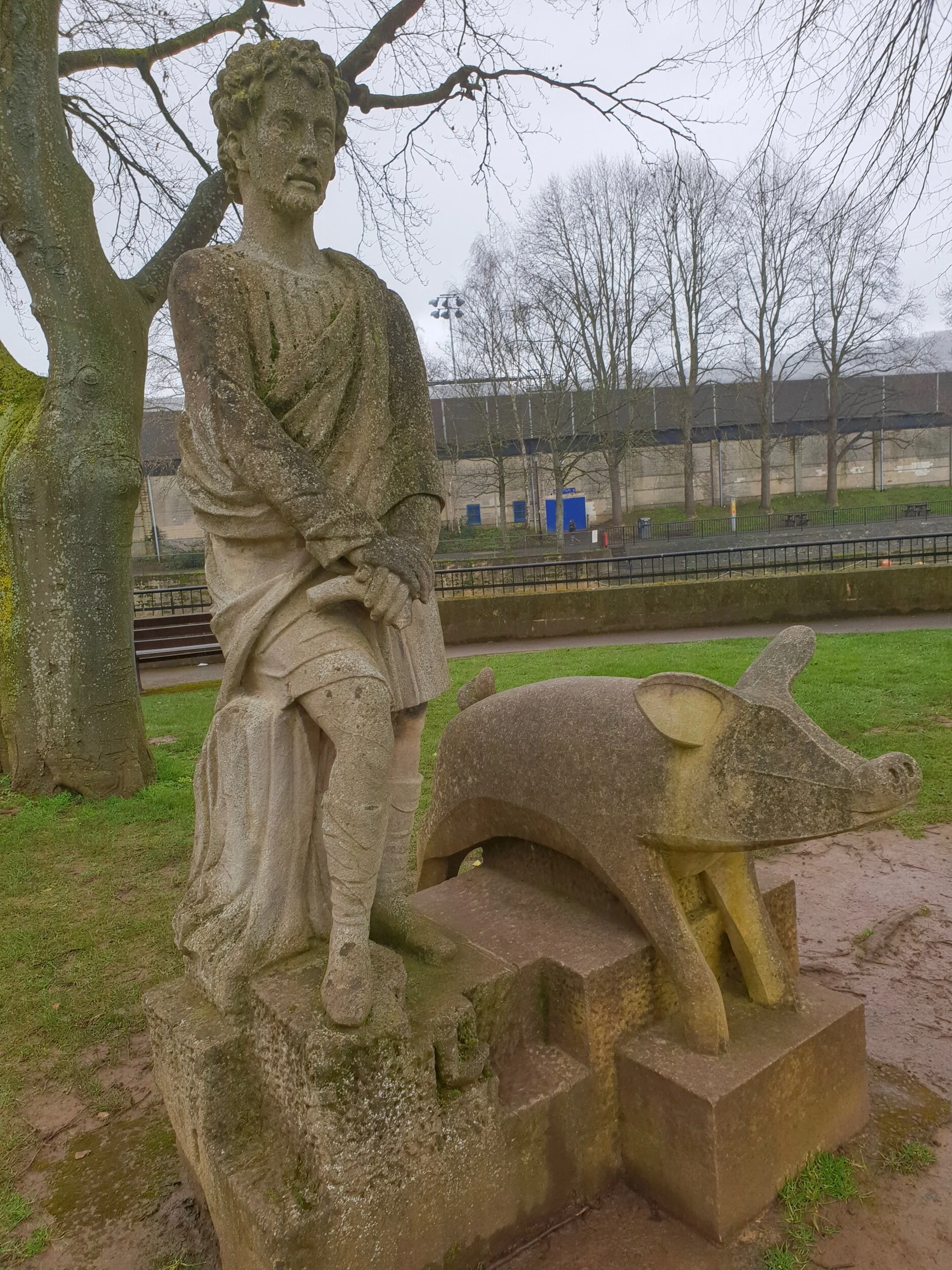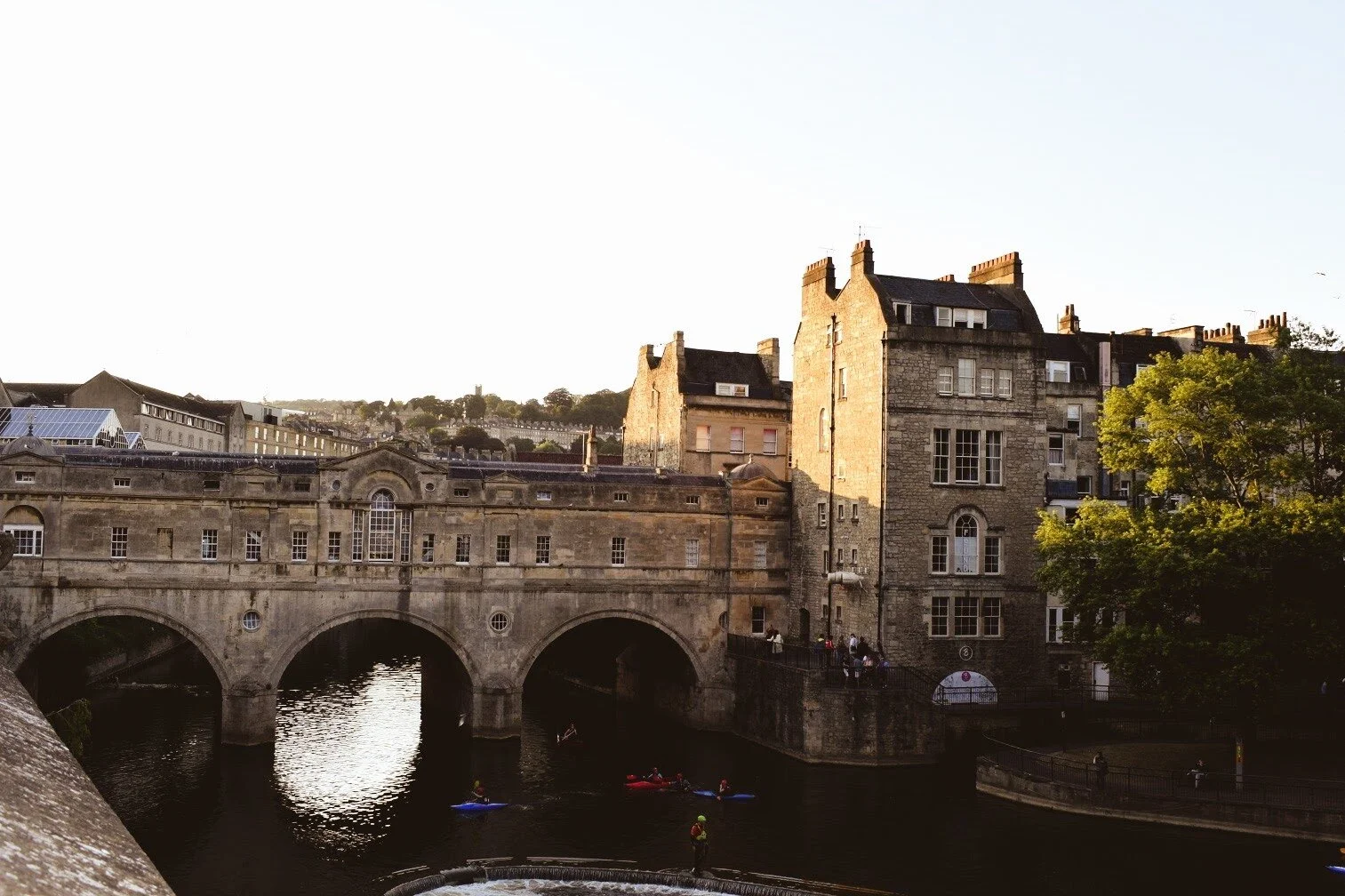The Roman Baths
We decided to plunge headfirst into the legends of the city, by visiting the Roman Baths. See where the mythical rubber hit the road.
What remains of the Baths lie in the city centre between cafes and bustling shops. This point has been an area of business and pleasure on and off for at least two thousand years and it is not a coincidence that Bath Abbey is within fifty feet of where the temple to Sulis Minerva stood. Everything spreads from this point.
Thanks to the abundance of Georgian splendour, you queue in a grandiose building with huge pictures of the goddess on the walls.
From there you head to a balcony surrounded by fake Roman statues from the Victorian era, which look down on the main bath. The green waters bubble away, always with a sheen of steam rising from the top like fog in the morning.
Once you are in the bowels of the museum, there are statues, prayer stones, gems and coins found within the water. A scaled down model displaying the Bath at different stages of history. A giant Gorgan head. Lead curses with requests to make people blind.
(Or as Andi described them, sheets of metal with scratches on them. That made us sit up.)
Further in you walk across metal walkways where the temple used to be. This is deep underground,and the air is cold and damp. Near a pipe that leads into hidden brickwork echoes the sound of running water.
At the end of this run is one of the most amazing archaeological discoveries in the United Kingdom. The golden head from a statue of Sulis Minera. Although missing the helmet, the hair and face are still intact, and could have been sculpted yesterday. At any point over the last fifteen hundred years, a piece of falling stone would have sent the statue to oblivion. And yet here she is. This is why our respondents know what the goddess looks like.
In a corridor near the smaller bath, you are level with the pool. There was once a statue of Sulis Minerva here, designed so she appeared to float on the surface of the water. The light from above still dapples on the bricks two thousand years later. Something could hide deep in the water here, and you would never know.
Near the end of your trip are the remains of the bigger baths. A plunge pool is now a wishing well. Hundreds of coins from many different cultures lie submerged, no different to the ancient coins found in an earlier display. We tossed in a fifty pence piece, one I found in the bottom of my bag. I swear it hadn't been there before. The coin landed with a pleasing plop, and sent ripples across the water. Would our wish come true?
In a corridor near the smaller bath, you are level with the pool. There was once a statue of Sulis Minerva here, designed so she appeared to float on the surface of the water. The light from above still dapples on the bricks two thousand years later. Something could hide deep in the water here, and you would never know.
.
Near the end of your trip are the remains of the bigger baths. A plunge pool is now a wishing well. Hundreds of coins from many different cultures lie submerged, no different to the ancient coins found in an earlier display. We tossed in a fifty pence piece, one I found in the bottom of my bag. I swear it hadn't been there before. The coin landed with a pleasing plop, and sent ripples across the water. Would our wish come true?
At the exit, there is a chance to drink the water itself. A metal water fountain runs on a constant loop, surrounded by historical quotes about the water. You can get a paper cup, and drink your fill. It's warm, with a strong metallic taste, like putting a penny in your mouth. Someone near us spat theirs out.
The taste is unique, and you know that it originates deep underground with every mouthful. We understand why people regarded this as a magic potion.
Alas, we did not see the goddess. But we came away with two key ideas. Firstly, the Roman Baths were never a fixed size. They are ever changing, and the only thing that has ever remained the same is the water, filtering through the earth for ten thousand years. On a chemical level alone this is an ancient place. Secondly, the goddess of the Baths, whatever you want to call her, is still doing very. You might be tempted to look at the Abbey on the other side of the square, and consider her defunct.
But how is her current set up any different to before? Every year thousands of people queue up to pay money to visit her temple and learn about her religion. You can buy keyrings with her face on. Queues stretch down the street to visit her place of worship. Do not tell me all those people throw money in the plunger for fun.
For many, these are wishes.







